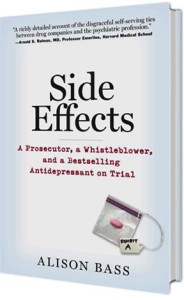Ever wonder why there are so many drug commercials on television these days? Because they work, despite the required litany of side effects in each ad. And now we know why these ads are so successful: new research indicates that viewers don’t really absorb the risks of the drugs being advertised because the commercials are expressly designed to distract them from digesting this information.
Ruth Day and her colleagues at the Medical Cognition Lab at Duke University studied a series of drug commercials and found that drug advertisers employ a number of distracting tactics: they put the litany of risks in the middle of commercials when attention spans wander, they speed up the recitation of side effects, making it harder for listeners to digest the information, and they use visual effects to distract people from what they’re hearing. In an ad for Nasonex, a nasal allergy drug, which features an animated bee, the wings of the bee moved and flashed during the side effects information. Yet when the benefits of the drug were enumerated, the bee hovered discreetly on one side.
“All these wing flaps and wing flashes and sparkly things esentially divided the attention of the viewers…and led to decreased knowledge” of the drug’s side effects, said Day, who presented her findings at a recent Congressional Energy and Commerce hearing on direct to consumer advertising.
Day concluded that federal officials need to do a better job of ensuring that the treatment of risks and benefits are “balanced” in drug advertisements.
Other witnesses at the hearing, held by a House subcommittee on oversight and investigations, noted that drug companies do not have to obtain approval of the Food and Drug Administration for such direct to consumer ads and that the FDA reviews only a small portion of the advertising materials they receive (on a voluntary basis). The agency can issue a warning letter if they come across material that is misleading or deceptive, but last year, the FDA issued only two such letters, according to Dr. Marcia Crosse, director of health care for the U.S. General Accounting Office. She noted that the FDA’s effort to police misleading ads slowed considerably after the agency began requiring that warning letters be routed through the FDA’s chief counsel office, causing delays of up to six months.
“We found the effectiveness of the FDA in halting [false and deceptive] advertising is limited,” Dr. Crosse said.
One solution would be for Congress give the FDA the authority and resources it needs to preclear all direct to consumer advertising, Crosse and other witnesses said. But that isn’t going to happen any time soon, as the May 8 hearing made abundantly clear. Even as Rep. Bart Stupak (D-Michigan), chair of the oversight committee, talked about the need to strengthen regulations on direct to consumer advertising, other members of the same committee were busy pooh-poohing the need for more oversight.
“I wonder if this is the appropriate time to debate these issues,” said Rep. John Shimkus, R-Illinois. Shimkus’ skepticism was shared by four other Republican members of the committee, all of whom, as bloggers on Pharmalotpointed out, received thousands of dollars in contributions from drug companies in recent years.
So it looks like American consumers are going to continue to be distracted by bees who flap their wings at just the right moment during drug commercials.



3 Comments